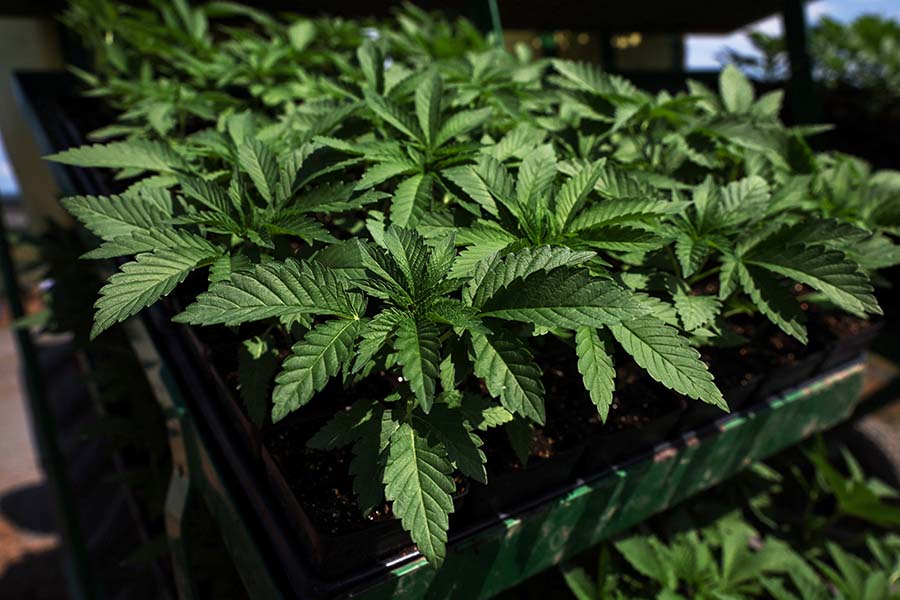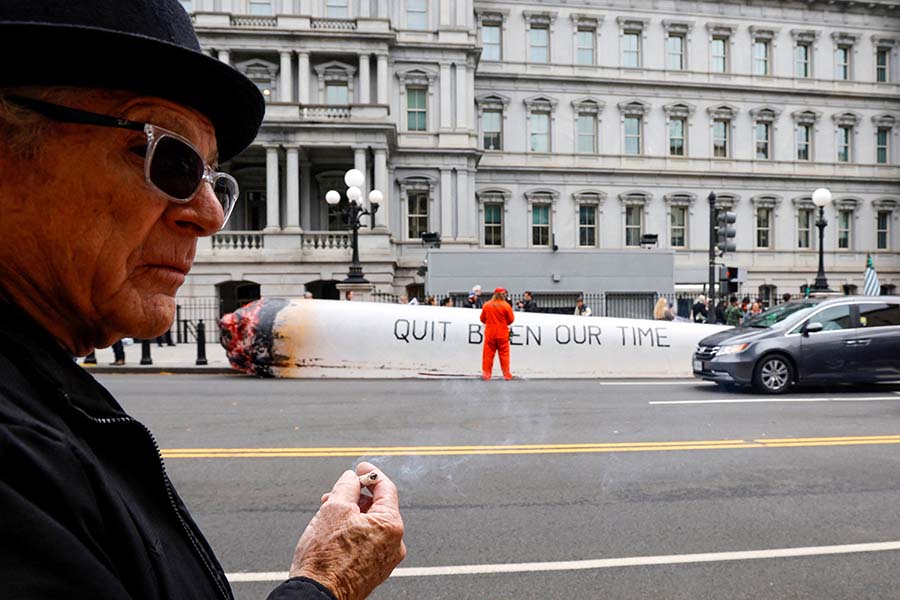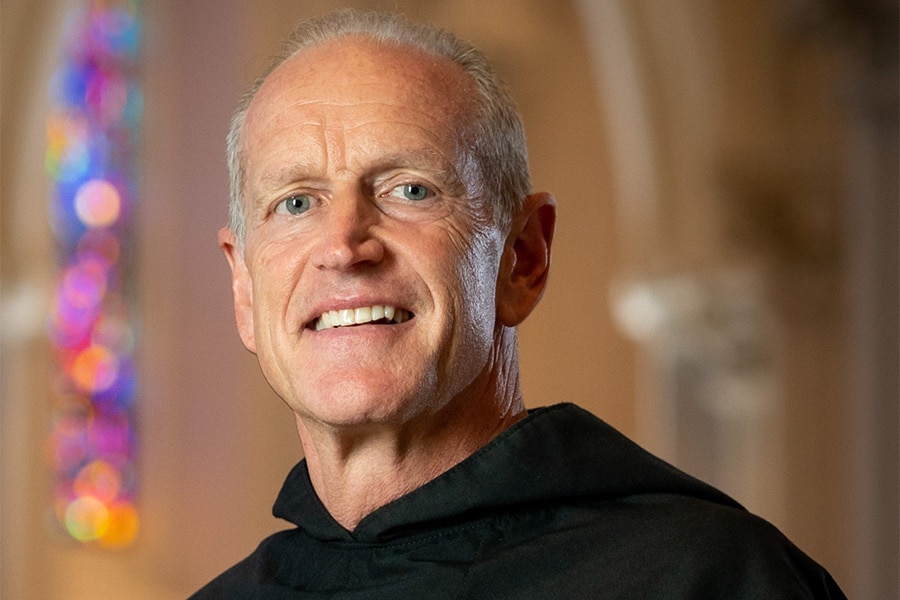Residents of Maryland and Missouri that voted during the midterms to approve recreational marijuana use must closely monitor the local regulatory details and local impacts on youth, according to a national watchdog group.
Five states had marijuana legalization on their midterm election ballots Nov. 8.
North Dakota, South Dakota and Arkansas voters rejected such initiatives.
But not those in Missouri and Maryland, bringing the number of states that have approved marijuana’s recreational use to 21, plus the District of Columbia.
“The unintended consequences of (marijuana) legalization are becoming a little more clear in terms of the states that didn’t rush in and where we were able to get out the message that legalization and commercialization amounts to the state helping an addictive industry grow,” said Colorado-based attorney and Catholic parent Rachel O’Bryan.

“The election (result) acknowledges that the legalization and commercialization of marijuana is not all ‘hunky dory,'” she said, “and that there are a lot of issues around consumer protection, teen access, public education funding, increased need for substance abuse prevention services and addictions that will come.”
O’Bryan, who served on a criminal law working group for the Colorado’s Amendment 64 Implementation Task Force in 2014, is co-founder and strategic projects director of “One Chance to Grow Up,” a Colorado-based nonprofit focused on educating communities on the impacts of marijuana commercialization.
She has maintained that people — and parents in particular — aren’t adequately aware of what the marijuana legalization means for society as a whole and for youngsters especially.
Nor, she said, has the full society impact of today’s popular high-potency marijuana products been fully studied and understood — but experiences gained over the last decade in Colorado point to the need for greater public skepticism of the multibillion dollar industry.
O’Bryan’s view on the impact of pot legalization mirrors concerns raised in a June study by the Drug Free America Foundation that called for further research in the correlation it found between the growing use of marijuana by young people, especially teens, and a growing rate of depression, mental illness and suicidal thoughts.
“Cannabis use is higher among all age groups in more highly permissive states, with 47 percent more monthly cannabis use among adolescents, ages 12-17, and 81 percent more monthly cannabis use among young adults, ages 18-25, in U.S. states with fully legalized recreational cannabis programs than (in) states where cannabis use has not been legalized,” the report said.
For O’Bryan’s part, she has liaised with concerned community partners and parent associations in Maryland and urges both that state and Missouri to look closely at the legalization impacts that are now more evident in Colorado a decade after voters OK’d legalized pot.
Those impacts included a correlation between high-potency marijuana and an increase in emergency room visits, mental illness and addiction, as well as an increase and younger drug usage among teens.
Today’s commercially available marijuana products are typically many times more potent that the widely consumed marijuana of 30 years ago, and are often marketed, packaged and sold in teen-friendly, discrete products suitable for vaping pens and easily hidden from adults and teachers, added O’Bryan in a phone interview with Catholic News Service from her winter home in Sarasota, Fla.

“We absolutely would hope that they would look to our experience. We tell people: Don’t be the Denver of 2010, be South Dakota of 2022. Technology and science move along and we know so much more now. Regulate for today — not what Colorado did a decade ago,” O’Bryan said.
She pointed out that the Netherlands, which preceded the U.S. on decriminalization or nonenforcement, never actually legalized or commercialized marijuana.
That country considers marijuana containing more than 15 percent THC to be a hard drug, whereas some widely available marijuana concentrates and vaping products in Colorado contain upward of 90 percent THC.
“THC” is tetrahydrocannabinol, the psychoactive ingredient in pot.
The concentrates and vaping products are thought to be a source of an increase of cannabis-related vomiting syndromes and chronic cannabis-use disorder episodes being seen more commonly in hospital emergency rooms.
“Vermont has a 60 percent THC potency cap. I also know that Massachusetts and Washington have introduced bills in recent years to limit potency. Potency has been on our radar for a long time, so it is reassuring to see that policy makers are becoming more aware through education,” O’Bryan said.
She urges parents and coalitions of concerned citizens to recognize these technological differences and that simply saying to children that “I smoked in high school and turned out OK” is not the way to parent through these new challenges presented by legalization.
“These are a processed product and the teen brain is developing all the way up to 25 years — if you start a substance when your brain is still developing, it will change your brain,” O’Bryan said.
With so much industry money supporting growth in the commercial marijuana industry, she added, it takes a broad coalition of religious, law enforcement, parent and medical community interest and action to push for greater regulation and public safety.
About 68 percent of Americans support legalizing recreational marijuana, according to Gallup. In 1969, when Gallup said first began polling on this question, “only 12 percent of Americans favored the idea.”
Too few voters who support legalization do so without fully considering how marijuana use would be restricted, taxed or regulated, let alone understanding issues of potency or consumption in public places, O’Bryan added.
In South Dakota, where legalization recently failed, a fairly broad coalition of opposition managed to communicate their public safety concerns to enough voters and with only less than half a million dollars in public awareness funding, according to Protecting South Dakota Kids.
That entity is chaired by James Kinyon, executive director and counseling director for Cathlic Social Services in Rapid City, S.D., and who connected the dots between legal marijuana laws to higher juvenile drug use, unemployment, mental illness and crime.
“We know how destructive marijuana is to the residents in states that have already legalized the drug,” Kinyon said in a news release.
“We presented a well-researched, fact-based informational outreach to as many communities across the state as we could physically get to the last three months.”
Marijuana legalization campaigns’ promise of huge tax revenues have been outed as false, leaving taxpayers responsible for the astronomical costs associated with emerging social problems, he added in a statement.
“Years after legalizing recreational marijuana, once beautiful cities like Denver, Missoula (Montana), San Francisco, Portland (Oregon), Chicago and Washington, D.C. are now facing the realities of increased crime, rising addiction, greater poverty and less family stability,” Kinyon continued.
“As clearly evident in the states that have legalized marijuana, we know the grim reality: Marijuana destroys,” Kinyon wrote.
“It robs children of their innocence and youth, it destroys young people’s lives as dreams give way to addiction, it tears families apart with grief, it takes a once-thriving vibrant community and turns it into a tragic tent city filled with broken individuals with shattered lives,” he said.
Even Colorado is reexamining its options for greater public health awareness and education around marijuana commercialization.
Colorado Springs, which currently only allows medicinal marijuana sales, recently voted down a ballot initiative this month for hosting recreational marijuana retail shops within city limits.
And last year, O’Bryan’s “One Chance to Grow Up” successfully pushed for a state regulatory brochure warning legal marijuana consumers of the possible medical dangers of high-potency marijuana concentrates.
That effort was the result of a coalition list of 60 entities last year, according to O’Bryan. “That’s the model. That’s what it take to regulate the industry.”
Editor’s Note: Results of Gallup’s recent poll of Americans’ views on marijuana legalization can be found online at https://bit.ly/3ESnr9k.
Read More World News
Copyright © 2022 Catholic News Service/U.S. Conference of Catholic Bishops








